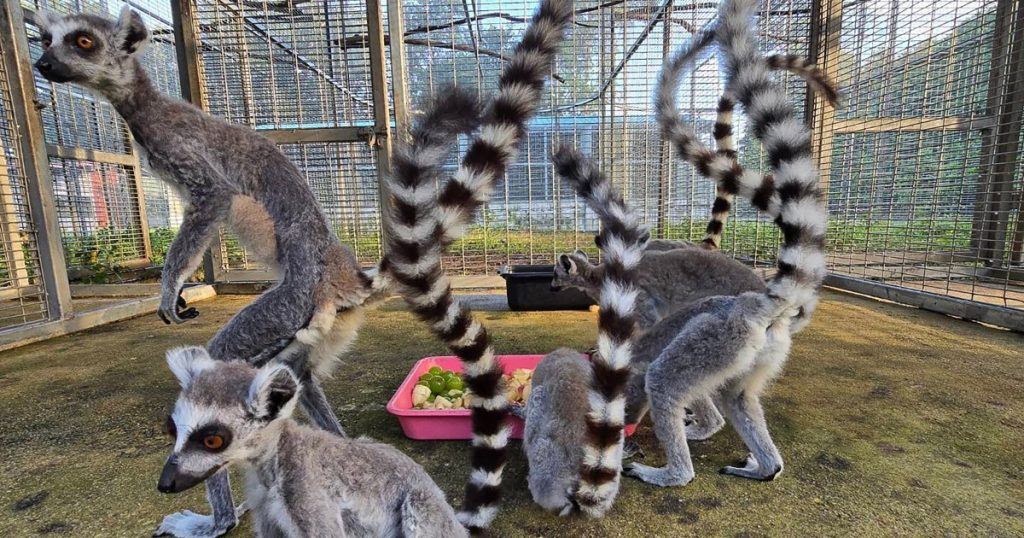In a remarkable display of international collaboration, a multi-agency operation culminated in the repatriation of nearly 1,000 endangered lemurs and tortoises from Thailand back to their native Madagascar. This unprecedented endeavor, the largest wildlife repatriation ever undertaken by both countries, began with a significant wildlife trafficking bust in May 2024. Thai authorities, acting on intelligence gathered through an international investigation involving agencies like Interpol, the UNODC, and the US Fish and Wildlife Service, intercepted a shipment containing over 1,100 lemurs and tortoises en route from Madagascar, via Indonesia and Malaysia. The animals, destined for the lucrative global exotic pet market, were rescued from the clutches of a sophisticated criminal network operating across international borders. This seizure underscores the pervasive nature of wildlife trafficking, a multibillion-dollar industry driven by insatiable demand for rare and exotic species.
The rescued animals, comprising ring-tailed lemurs, brown lemurs, radiated tortoises, and spider tortoises, all listed as vulnerable to critically endangered, were initially housed at a wildlife breeding center in Chonburi, Thailand. The animals, many in poor health upon arrival, received dedicated care from Thai wildlife officers and veterinarians for seven months. Sadly, a number of tortoises and one lemur perished despite these efforts, highlighting the detrimental impact of trafficking on these vulnerable creatures. The repatriation process, a complex undertaking requiring intricate logistical coordination and adherence to international regulations, was further complicated by the animals’ fragile condition. Despite facing several delays, the operation successfully transported the surviving animals to Madagascar over three separate flights, generously sponsored by Qatar Airways and Airlink, spanning from November 30th to December 12th.
Thailand, while acknowledged as a key player in the legal wildlife trade, also serves as a significant hub for illegal trafficking. Its geographical location and existing trade networks make it a transit point for illicit wildlife shipments. This duality underscores the complex challenges facing authorities combating wildlife crime. Reports indicate Thailand as Southeast Asia’s leading importer of legally traded wildlife from Madagascar, but also highlight the country’s significant role in illegal seizures, second only to Madagascar itself. This illustrates the blurred lines between legal and illegal trade and the inherent difficulty in accurately assessing the true scale of the illegal wildlife trade. Experts acknowledge that seizures likely represent only a fraction of the actual trafficking activity, as criminal networks constantly adapt their methods to evade detection.
The repatriation effort, while a monumental achievement, represents just one phase in a larger battle against wildlife crime. Madagascar’s unique biodiversity, with a staggering 90% of its species endemic to the island, makes it particularly vulnerable to exploitation. The illegal wildlife trade poses a severe threat to the country’s natural heritage, second only to habitat loss as a driver of biodiversity decline. The repatriated animals, upon completing quarantine, will be relocated to specialized centers within Madagascar’s nature reserves. The ultimate goal is their eventual release back into the wild, a complex process requiring careful monitoring and management. Simultaneously, investigations into the origins of the seized shipment are ongoing, highlighting the commitment to dismantling the criminal networks responsible for these illegal activities.
The success of this operation, from the initial seizure to the final repatriation, underscores the critical importance of international collaboration in tackling the complex issue of wildlife crime. The joint efforts of law enforcement agencies, international organizations like the UNODC, and private sector partners demonstrate the power of collaborative action. This multi-faceted approach, combining intelligence sharing, coordinated investigations, and logistical support, proved crucial in bringing the perpetrators to justice and ensuring the safe return of the endangered animals. The case serves as a potent example of how partnerships can effectively combat transnational criminal networks and protect vulnerable species.
Beyond the immediate success of the repatriation, this operation serves as a powerful symbol of the ongoing fight against wildlife crime. The rarity and unique characteristics of endangered species like lemurs and radiated tortoises drive their high value in the black market, fueling the illicit trade. Criminal networks, motivated by substantial profits, employ sophisticated methods and constantly shifting tactics to exploit weaknesses in law enforcement and circumvent international regulations. The complexity of these networks necessitates ongoing, collaborative efforts across borders to disrupt their operations and protect threatened species. This operation demonstrates that success is achievable through joint action, highlighting the necessity of sustained, coordinated strategies to combat the persistent threat of wildlife trafficking.

